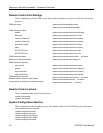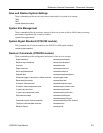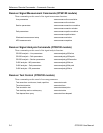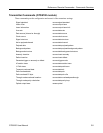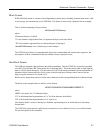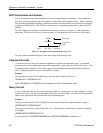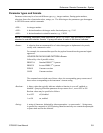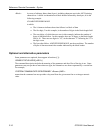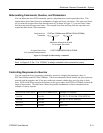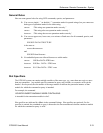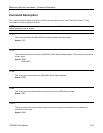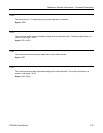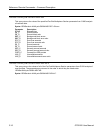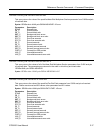
Reference: Remote Commands ~ Syntax
3-10 OTS9100 User Manual
<Block> An array of arbitrary binary data (bytes), including characters not in the ASCII printing
character set. A block is transmitted as a block header followed by data bytes, as in the
following example:
#216ABCDEFGHIJKLMNOP
in which:
⇒ The # character indicates that what follows is a block of data
⇒ The first digit, 2 in this example, is the number of digits in the block length field
⇒ The next digits, of which there are two in this example, indicate the number of
bytes of data that follow. In this example, there are 16 bytes, so the block length
field is 16. There are two digits in "16," so the character "2" following the "#" is
the digit count.
⇒ The bytes that follow, ABCDEFGHIJKLMNOP, are the actual data. The number
of bytes of data must match the number indicated by the block header.
Optional and alternative parameters
Some parameters are optional; these appear in brackets ([ ]):
:SENSE:STATUS:LEDS [<NR1>]
The command description includes the meaning of the parameter and the effect of leaving it out. Some
parameters may accept data of more than one type; the alternatives are shown separated by a vertical bar.
For example,
:SYSTEM:COMMUNICATE:GPIB:PRIMARY <Enum>|<NR1>
means that the command can accept either a keyword from the given enum list or an integer numeric
value.



